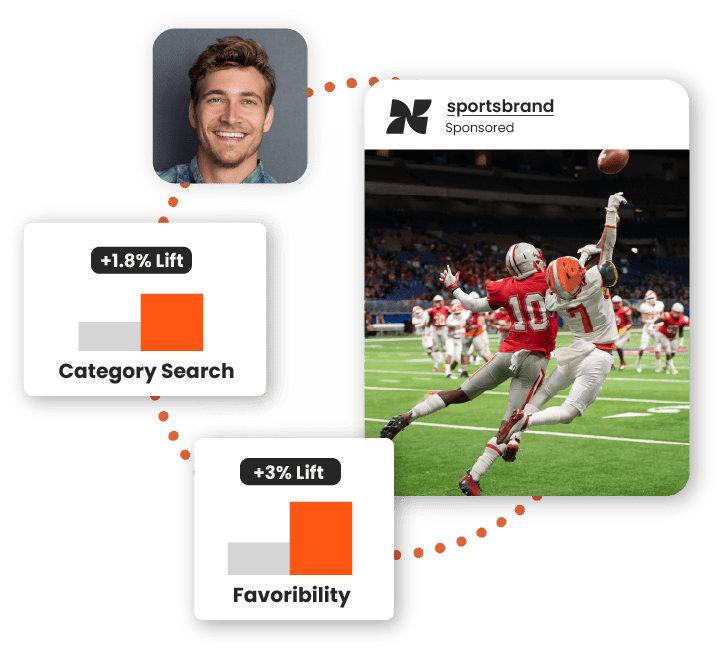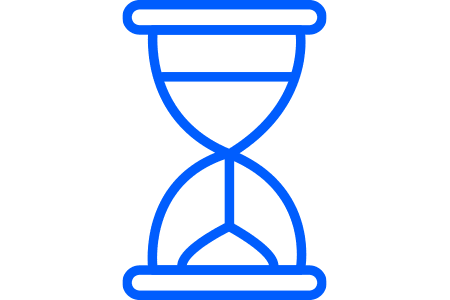Cross-platform
measurement
with DISQO

Measure what matters, where ever it runs
Advanced media exposure measurement
DISQO captures ad exposure across channels using a combination of:
- Tags where possible, such as on: programmatic, connected TV (CTV), display, audio
- Server-to-server integrations with select platforms
- Tagless technology powered by AI to capture and classify advertising exposures across any platform.
- Deterministic, household-level TV data to measure ad exposure on linear and traditional broadcast
This enables true cross-platform tracking without relying on publisher reporting or modeled exposures. If you can tag it, we measure it. If you cannot, we still do.


Identity-based, deterministic methodology
At the core of DISQO’s measurement is a deterministic, person-level identity framework. All exposure is tied to real individuals in our U.S. audience.
Each study is grounded in experimental design, with balanced, weighted, and statistically validated control and exposed groups. This ensures every result you see is based on what actually happened.
Know where to optimize, know where to invest
DISQO isolates the performance of each channel, partner, audience, and creative so you can see what is working and what is not. We track both brand lift and behavioral outcomes, including search, site visits, and competitive activity.
You will know which channels are contributing to real business outcomes and where optimizations are needed. Whether you are evaluating CTV, social, programmatic, or audio, we help you compare results in a way that is actionable and grounded in proof.


Standardized measurement across all partners
With DISQO, every channel and partner is measured using the same methodology so you can compare results with confidence.
We eliminate inconsistencies that come from siloed reporting, or vendor-specific definitions. From high-level summaries to deep tactical reads, everything is built to give your team one consistent view of media performance across the plan.
Sophisticated measurement allows you to cut by the following dimensions

Audience

Channel

Media partners

Creative

Placement

Frequency
Report:
Consumer Trends 2025
Get insights into the changing dynamics of consumer behavior. From evolving purchase paths to the importance of each channel, this report equips you with the knowledge to stay ahead in a competitive market.

In their own words
Working with DISQO, we were able to see results that we simply weren’t able to see with the tools we used for previous campaigns...The ability to measure the campaign using the DISQO audience let us understand site visitation, search behavior and brand sentiment in a way that wasn’t otherwise possible.
Jennifer Laing
VP, Operations
We partner with DISQO to help us bring together a unified view of the many different places we're advertising…with DISQO, we're able to leverage a passive panel where we can get a sense of how people are responding not only in CTV but also social media…without a partner like DISQO, it becomes extremely challenging to understand what value social media advertising has relative to CTV. Also what sort of synergies there are when people are exposed across multiple channels.
Richard Haymore
Director of Campaign Effectiveness
Wherever our viewers are and wherever we have content, we need to be able to measure it. We find a lot of value in examining how platforms collectively drive overall campaign success and how each platform complements one another. Most campaigns run across multiple platforms today, so it’s critical to understand how they work together. DISQO plays a huge role in helping us break down silos and glean those cross-platform insights that are so crucial to holistic ad measurement.
Jennifer Strapp
VP Audience Impact & Intelligence
Normative benchmarks for
social media advertising
DISQO’s normative benchmarks, aggregated across thousands of campaigns, show that social media has the highest impact on upper and lower funnel KPIs compared to cross-channel campaigns.
Frequently Asked Questions
What if my campaign runs across social, CTV, Linear TV, and out-of-home? Can DISQO measure it?
DISQO measures exposures across all of them in one consistent framework. Tagged digital media, integrated platforms, proprietary tracking for social, and household-level TV data all feed into a single view.
Can DISQO measure advertising exposure on channels that can’t be tagged?
Yes. Our proprietary tracking technology captures exposures in non-taggable environments like social apps and browsers. For linear and traditional TV, we use deterministic household-level data.
Are there feasibility requirements to run a cross-platform study?
Yes. Feasibility depends on factors like media type, audience size, and campaign length. Our team will review your plan upfront to confirm coverage and set expectations.
How does DISQO separate the impact of each channel?
We isolate results by channel, partner, creative, and audience segment, so you see which pieces of your plan drive lift and which deliver less value. You can filter your data yourself in the dashboard, download it to analyze in house, and understand it more deeply with our managed services readouts.
What if different partners give me their own measurement results?
Partner-reported studies have their place, but when looking across multiple partners you often see different methods, making comparisons unreliable. DISQO applies one deterministic methodology everywhere, so results are apples-to-apples.
How does cross-platform measurement help with optimization?
It reveals which channels or tactics are moving awareness, favorability, or consideration. With that clarity, you can shift spend, adjust creative, or refine targeting mid-flight.
Can DISQO show how channels work together?
It reveals which channels or tactics are moving awareness, favorability, or consideration. With that clarity, you can shift spend, adjust creative, or refine targeting mid-flight.
What outcomes can I measure?
Cross-platform studies can capture both brand outcomes (awareness, favorability, intent) and behavioral outcomes (search, site visits, competitive activity).
How quickly can I see results?
Results are available in dashboards in near real time, giving you visibility during the campaign and detailed reporting at the end.
Industry Insights
- Article
How sophisticated brand measurement is helping marketers level up equity in 2026
The power of your brand isn’t created by a single message or a perfectly timed impression. It’s built through the accumulation of interactions, memories, and moments of truth that shape how people feel, and ultimately, what they choose. This is the foundation of brand building; the subtle but persistent process that shapes brand image, brand equity, and brand awareness over time.
In 2026, consumers navigate choices through steady layers of advertising and brand experiences, more than isolated exposures, which means brands compete on the reliability they deliver and the trust they earn across every touchpoint. This growing expectation elevates the importance of brand strength, brand exposure, and overall brand health that businesses cultivate through their presence and consistent provision of value.
- Article
The stakes of big game and tentpole marketing
Tentpole moments, especially the Big Game, concentrate attention and forge memory. They create rare windows where brand building can flow into both equity and action. Because strong advertising behaves less like a verdict and more like a rehearsal, these moments stack. They turn ordinary products into the obvious choice, the one people reach for even when no purchase is urgent.
- Article
How small shifts reveal big impact across the full advertising funnel
Marketers love big numbers, a viral spike, a record-breaking conversion rate, or a chart that shoots straight up. Yet when it comes to advertising effectiveness, the real story of growth is often written in smaller, steadier lines.
A 2-point lift in purchase intent may look like a modest gain. Still, it can represent thousands of new customers, millions in incremental revenue, and a measurable shift in market momentum. Those two points are the difference between being remembered and being chosen.
- Article



